 | Mammillaria Society Forum
Discussion Forum about Mammillaria, Coryphantha and Escobaria
|
|
| | Mammillaria ID |  |
| | | Author | Message |
|---|
Guest
Guest
 |  Subject: Mammillaria ID Subject: Mammillaria ID  Sat May 26, 2012 10:11 am Sat May 26, 2012 10:11 am | |
| [img]  [/img] A have this long spined form without name. Some say it's a magnimamma form, but i'm not sure. Any suggessions? |
|   | | Chris43
Moderator


Number of posts : 1872
Age : 81
Location : Chinnor, UK
Registration date : 2008-07-16
 |  Subject: Re: Mammillaria ID Subject: Re: Mammillaria ID  Sat May 26, 2012 7:04 pm Sat May 26, 2012 7:04 pm | |
| yes, fo me this is an extreme form of magnimamma.
_________________
Chris43, moderator
| |
|   | | Guest
Guest
 |  Subject: Re: Mammillaria ID Subject: Re: Mammillaria ID  Sat May 26, 2012 8:18 pm Sat May 26, 2012 8:18 pm | |
| |
|   | | Guest
Guest
 |  Subject: Re: Mammillaria ID Subject: Re: Mammillaria ID  Sun May 27, 2012 8:06 pm Sun May 27, 2012 8:06 pm | |
| 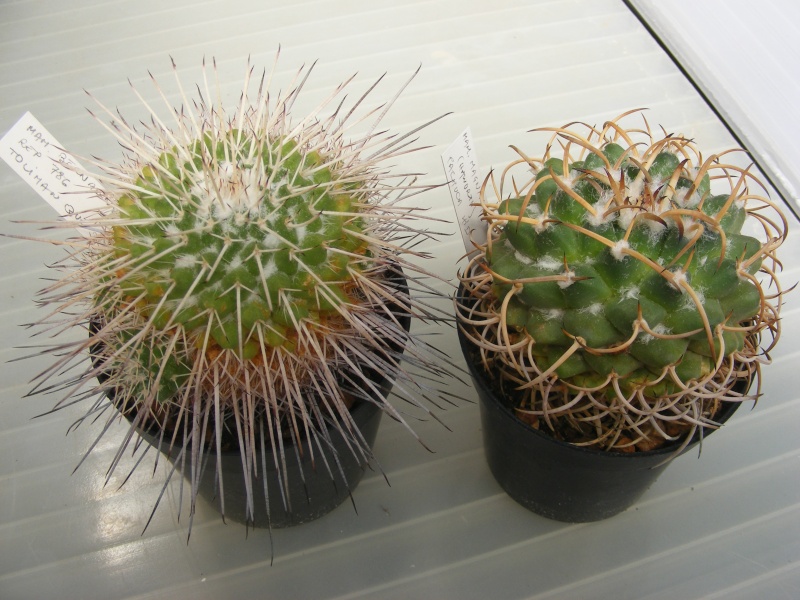 Hello all, I have litlle doubt that Hermit's plant has it's origin in the Barranca de Toliman. It is widespread there and make big clumbs. Plants like Hermit's one and the one in my pic. were in Reppenhagen's mind when he rediscribed Mam.tolimensis into Mam.bernalensis. The plant on the right is a Mam.magnimamma who fits the original descripsion perfectly.(from Pachuca) For me it's inpossible to keep the plants above under the same label. (as Mam.magnimamma) I would like to know how other members of this forum think about this matter I would label Hermit's plant as Mam.bernalensis (sensu Reppenhagen) Regards, Walter |
|   | | Guest
Guest
 |  Subject: Re: Mammillaria ID Subject: Re: Mammillaria ID  Sun May 27, 2012 9:22 pm Sun May 27, 2012 9:22 pm | |
| You have a point, because i also have a plant what fits the original magnimamma description (like your right one), and tried to make seeds with this two several times, with no success. Also there are other differences, not only the length of the spines, but the shape of the mammas too. I'm still uncertain though, because the flowers are very similar. |
|   | | Guest
Guest
 |  Subject: Re: Mammillaria ID Subject: Re: Mammillaria ID  Mon May 28, 2012 9:27 am Mon May 28, 2012 9:27 am | |
| Actually Mammillaria bernalensis is a Mammillaria compressa and not a magnimamma. But yes, you are forgiven for the mistake, I am confused myself and does not know actually the real difference between compressa and magnimamma other than that M. compressa has red flowers and magnimamma cream flowers and the curving lower spine in magnimamma. To make matters worse the two habitats overlap and many field numbers locality data actually name compressa (or their synonyms) with magnimamma and vice versa.
Having said this I actually think that there are several compressa/magnimamma species that should be renamed or the old name withheld. One case in point is M. bernalensis. I have seen this in habitat near Bernal, Queretaro and Cadereyta. It is much different than the M. compressa seen near Doctor Arroyo, Nuevo Leon and San Jose Del Llano, Tamaulipas. Yes, and I have seen M. magnimamma near Pachuca, Hidalgo, with very long twisted spines similar to ones seen at Villa Panasco, SLP which were actually named canopsea. While those near Gilo, Hidalgo, with more rounder tubercles are easily distinguished. So I think that Repenhagen was sometimes right in keeping some old names. I have several and they all are worthed to keep, if not for anything else for their diversity (but not for bench space).
And this brings me to another question that has been lurking at the back of my mind for some time. Convergent evolution or mimicry is very much the norm in Mexico. Some species are found in the same locality while others are miles apart yet they look very similar. A case in point is Astrophytum coahuilense and A. myriostigma. They are almost the same and one is forgiven to make the mistake in labeling them the same species. But these two do not even actually interbreed with each other. Then there is Aztekium hintoni and Geohintonia mexicana which are very similar. It seems that pollinators would favour a certain shape and those of a certain shape are therefore more able to breed. Thus, many different taxa may become similar through time. I can name even many more . Particularly, I find M. winterae and Thelocactus matudae superficially similar in habitat. So much so that I have to sit down and examine them to distinguish them. Another two species are M. elongata and Acharagma roseana ssp. galeanensis. So, if this phenomenon is common in nature why not there should be several species of M.compressa and/or M. magnimamma that were different long ago and through convergent evolution have again become similar? |
|   | | Guest
Guest
 |  Subject: Re: Mammillaria ID Subject: Re: Mammillaria ID  Mon May 28, 2012 1:11 pm Mon May 28, 2012 1:11 pm | |
| Yes Amante, it' belongs in the Mam.compressa group. This is the way Reppenhagen saw it: 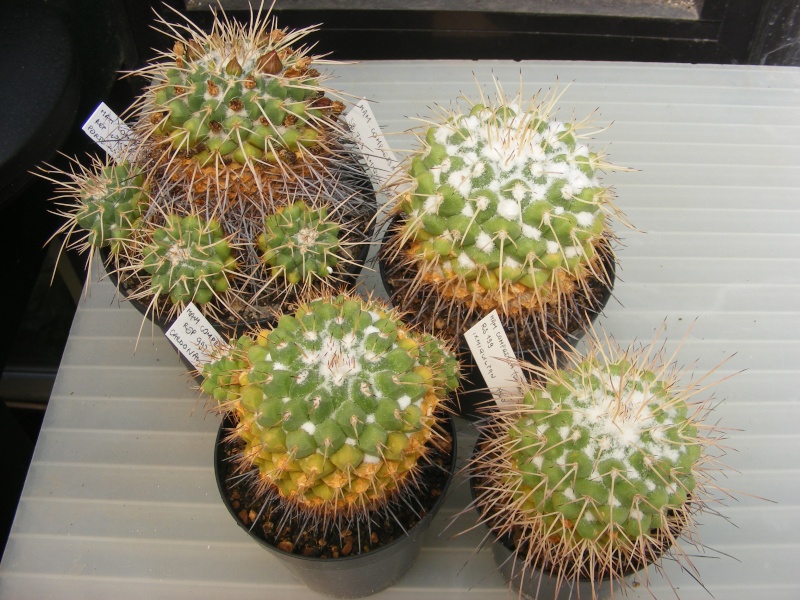 Mam.compressa (all 4 spines, no centrals) Rep1001,Potezuela,Hid. SB723,Ixmiquilpan,Hid. RS199,Ixmiquilpan,Hid.Rep997,Cardinal,Hid. |
|   | | Guest
Guest
 |  Subject: Re: Mammillaria ID Subject: Re: Mammillaria ID  Mon May 28, 2012 1:21 pm Mon May 28, 2012 1:21 pm | |
|  Mam.bernalensis (0-3spines on the side and 3-6 centrals) Sorry for pic quality. Mam.bernalensis, Barr.de Toliman,Qro. Rep1165,Las Palmas,Qro. Rep786,Toliman,Qro. |
|   | | Guest
Guest
 |  Subject: Re: Mammillaria ID Subject: Re: Mammillaria ID  Mon May 28, 2012 1:25 pm Mon May 28, 2012 1:25 pm | |
|  For compressa forms with central spine he discribed Mam.centalifera. Rep1140 and Rep1141,Arroyo seco,Qro. PN137,El Huizache,SLP. Sorry not sharp! |
|   | | Guest
Guest
 |  Subject: Re: Mammillaria ID Subject: Re: Mammillaria ID  Mon May 28, 2012 1:37 pm Mon May 28, 2012 1:37 pm | |
| I think we agree that all this plants come from central Mexico. But what to do with this very simular plant hereunder?  My plants come from original seed from plants discovered by Alfred Mehwald (Austria)on vertical rocks when his Cuban guide climbed down on rope trying to collect some yellow spined Mam.prolifera, west Santiago de Cuba, in Cuba. |
|   | | Guest
Guest
 |  Subject: Re: Mammillaria ID Subject: Re: Mammillaria ID  Mon May 28, 2012 4:08 pm Mon May 28, 2012 4:08 pm | |
| That is an interesting one from Cuba. But could the seeds had been mixed up at home? I know these things happen as I collect seeds for the Maltese society and even from my own plants some rogue seeds may end up with the wrong batch. And I have had ones from virtually every cactus commercial seed vendors that turned out with rogue seeds. As to Repenhagen plants I agree that he went to the extreme as to naming of plants but there are interesting shapes out there that are worth to keep.  This picture was taken near Pachuca hidalgo.  Mammillaria bernalensis from Cadereyta, Queretaro. |
|   | | Guest
Guest
 |  Subject: Re: Mammillaria ID Subject: Re: Mammillaria ID  Mon May 28, 2012 4:21 pm Mon May 28, 2012 4:21 pm | |
|  Mammillaria bernalensis in flower. Cadereyta, Queretaro 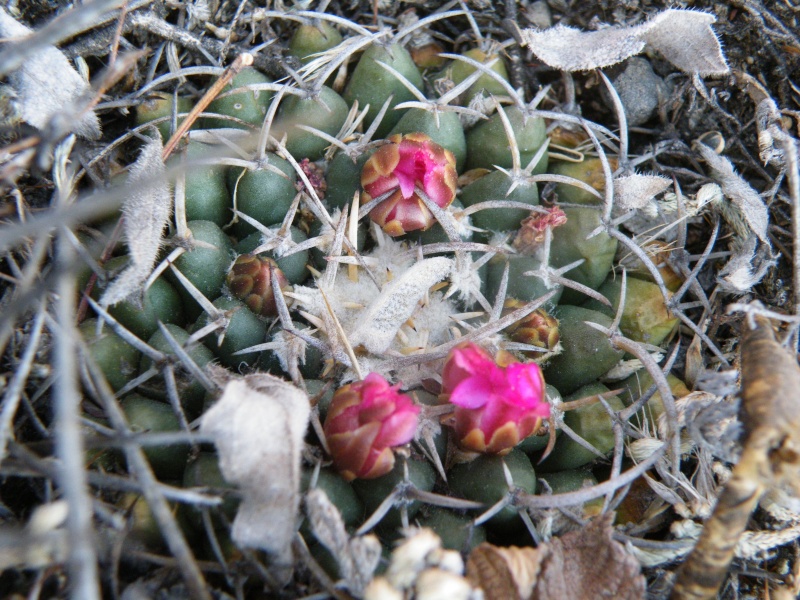 Mammillaria species from near Gilo, Hidalgo  Mammillaria magnimamma (vagaspina) from Villa Hidalgo, San Luis Potosi |
|   | | Guest
Guest
 |  Subject: Re: Mammillaria ID Subject: Re: Mammillaria ID  Mon May 28, 2012 4:33 pm Mon May 28, 2012 4:33 pm | |
| 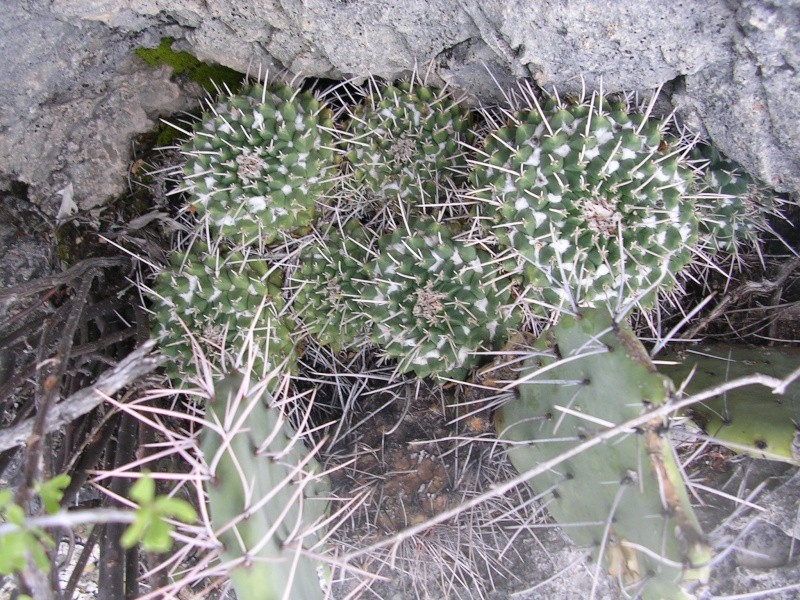 Mammillaria compressa, San Jose Del LLano, Tamaulipas |
|   | | Guest
Guest
 |  Subject: Re: Mammillaria ID Subject: Re: Mammillaria ID  Tue May 29, 2012 4:41 pm Tue May 29, 2012 4:41 pm | |
| Thank you Amante for showing us all those pictures from habitat. I like it to compare pictures from origin places.
I'm quite unshure about M.bernalensis from REPPENHAGEN. Is there really a difference to M.tolimensis CRAIG? REPPENHAGEN saw in M.tolimensis a form of magnimamma while CRAIG compare it with compressa... Has anyone fotos from habitat of M.tolimensis or other forms from Queretaro?
Some people (incl. REPPENHAGEN) refer the plants from Gilo to M.seitziana which lead over to the Magnimamma group.
|
|   | | Guest
Guest
 |  Subject: Re: Mammillaria ID Subject: Re: Mammillaria ID  Tue May 29, 2012 8:06 pm Tue May 29, 2012 8:06 pm | |
| Here is a picture I took of M. bernalensis at San Pablo Toliman, which is about 4.5 miles from Toliman and is North of Bernal (see map). I have looked at the picture of M. tolimensis in Craig's book and they look the same to me. I only found this species in San Pablo Toliman and there was no other compressa/magnimamma type species which is not surprising. But there were other Mammillaria; longimamma, polythele, and perbella. It is one of the richest cactus areas I have ever found in such a small area.  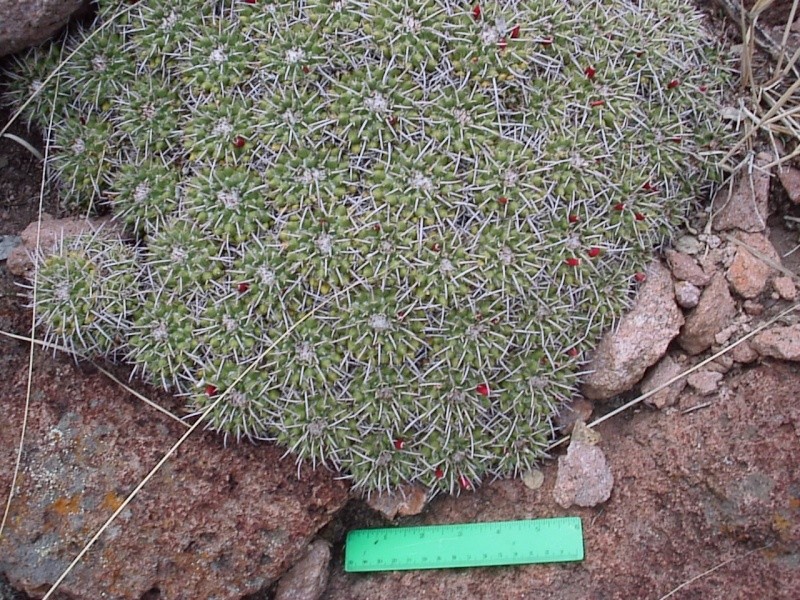 Sorry for the quality of the pictures but it was taken with a 2.3 digital camera in 2003  I could not find in Craig's book any reference for it ( tolimensis) being a type of compressa other than it is unclassified species(quote "we are uncertain as to the key to the species" unquote) . But Pilbeam refers this to compressa. I do not have Repenhagen's book. C. Marsden in his book Mammillaria places it in series Polyedrae but there is no picture of the plant. I believe it is a type of compressa but it is worth keeping as it is very different from the classic compressa found in collections. Again if Repenhagen thought it was a type of magnimamma and if it is the same species at least I am not the only one to confuse the two species. As to the other one near Gilo I agree that it is what Repenhagen called sietziana. It has very round tubercles. Here is another picture from the same area.  |
|   | | Guest
Guest
 | |   | | woltertenhoeve
Number of posts : 348
Registration date : 2009-10-01
 |  Subject: Re: Mammillaria ID Subject: Re: Mammillaria ID  Tue May 29, 2012 9:50 pm Tue May 29, 2012 9:50 pm | |
| For me, it is difficult to attach a name to the Hermit plant. The body colour seems to be more like M. magnimamma (compressa-like plants have a lighter-green body colour), the spines seem to be more like M. compressa aff. I have seen M. magnimamma at many locations and the spination can vary a lot. Attached is a photo of a M. magnimamma near Laguna Seca, Zacatecas. The magnimammas here have a very impressive spination. And what do you think of the habitat photo of M. centralifera in the 2-volume Reppenhagen book (p. 697)? That plant also looks very similar to the Hermit plant. Some other remarks: 1. Red flowered M. magnimamma grow in the eastern part of its distribution range, the pale-yellowish flowered ones grow in the western half of its distribution range (generally speaking). 2. The Barranca de Toliman is not located near Toliman, but quite far away from it. It runs from northwest of Zimapan to the Rio Moctezuma. It is a wonderful barranca and going through it (on the dry river bed, difficult driving, only possible in the dry season) was one of the highlights of all my Mexico trips. No compressa or magnimamma there, but M. leucocentra, longimamma, elongata, glochidiata and a huge amount of Strombo disciformis at the Rio Moctezuma side (in my opinion the most numerous cactus species of Mexico) on the steep rock walls. At one point you drive between very high vertical rock walls which are only 5 meters apart! (see photo) I do not know why this barranca is called Barranca de Toliman. 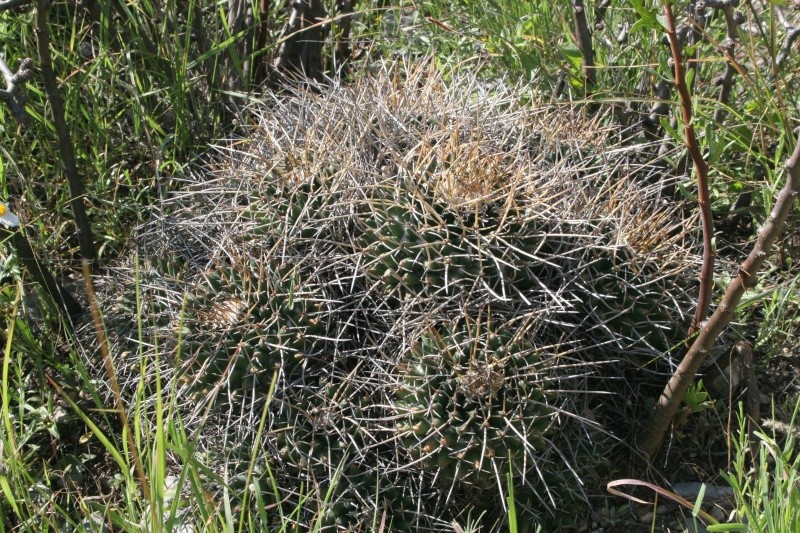  Wolter. | |
|   | | Guest
Guest
 |  Subject: Re: Mammillaria ID Subject: Re: Mammillaria ID  Wed May 30, 2012 10:16 am Wed May 30, 2012 10:16 am | |
| Well, this last one seems to be the closest to my plant. What's the color of the flower? Mine is cream with a light brown middle stripe, like the standard magnimammas.
I will make pictures from the blooming and share them with you, when it's time. |
|   | | Chris43
Moderator


Number of posts : 1872
Age : 81
Location : Chinnor, UK
Registration date : 2008-07-16
 |  Subject: Re: Mammillaria ID Subject: Re: Mammillaria ID  Wed May 30, 2012 12:31 pm Wed May 30, 2012 12:31 pm | |
| A very interesting thread this, as the plants rae just so different in spination at least.
I am not at home at the moment, so don't have access to all my photos (other computer), but to asnwer one original question, I label my plants as Mammillaria magnimamma Rep 1109 'seitziana', so that I preserve the name when described but allocate it to the right (?) botanical species.
North of Pachuca, I have seen yellow flowered and red flowered plants growing side by side. Spine lengths vary a lot even in the same location. Unless there are hunbdreed of species, then a conservative approach must be the right way of dealing with this species.
As to the difference between compressa and magnimamma, I don't have my reference books here, but I thought it was to do with the presence or absence of bristles in the axils, but my memory might be wrong. It has never seemed enough to me to separate them, but to have just a single species also seems wrong.
_________________
Chris43, moderator
| |
|   | | Guest
Guest
 |  Subject: Re: Mammillaria ID Subject: Re: Mammillaria ID  Wed May 30, 2012 7:27 pm Wed May 30, 2012 7:27 pm | |
| I agree with woltertenhoeve that Barranca De Toliman is far away from the town of Toliman, so the plant in the picture labeled as M. bernalensis Barranca de Toliman cannot be correct. Either it is not bernalensis or it is not in the Barranca de Toliman.
One can safely assume that Reppenhagen named M. bernalensis for the town of Bernal and all the plants resembling the type species are found close to the town of Bernal:
Colon, a town 7 miles west of Bernal (Rep. 32, Rep. 609b & Rep.1814)
Toliman see map above (Rep. 786)
San Pablo Toliman see map above (Rep. 790, Rep. 1161)
San Antonio Bernal (Rep. 792b)
El Gallo, a town 9 miles SW of Bernal (Rep. 793)
San Pablo Toliman-Higuerillas (Rep. 1162)
Carboneras about 14 miles west of Bernal (Rep 1824 & Rep. 1827)
Zamorrano a town between Carboneras and Colon, West of Bernal (Rep.1830)
Las Palmas I could not locate this town(Rep. 1165)
|
|   | | Guest
Guest
 |  Subject: Re: Mammillaria ID Subject: Re: Mammillaria ID  Wed May 30, 2012 8:27 pm Wed May 30, 2012 8:27 pm | |
| Wow, i'm impressed how much knowledge is here...
To be honest, i'm not a Mammilaria, but a Fero/Echinocactus collector, but if a nice plant happens to be a M., i don't throw it away. Basically speaking, i love all my cacti.
But you have seen these plants in habitat, therefore i'm really, really jealous of you! |
|   | | woltertenhoeve
Number of posts : 348
Registration date : 2009-10-01
 |  Subject: Re: Mammillaria ID Subject: Re: Mammillaria ID  Fri Jun 01, 2012 9:24 pm Fri Jun 01, 2012 9:24 pm | |
| I have not seen flowers on the plant which I pictured (from Laguna Seca, ZAC).
I would be very careful in attaching a name to an unknown plant, considering the great variability of many Mammillaria species. You can only attach a name to a plant when you know its exact origins. My advice is to keep the plant unlabelled or add a name (compressa aff. or magnimamma aff.) with a couple of big question marks.
Wolter ten Hoeve. | |
|   | | Guest
Guest
 |  Subject: Re: Mammillaria ID Subject: Re: Mammillaria ID  Wed May 07, 2014 2:15 pm Wed May 07, 2014 2:15 pm | |
|  Well my memory tricked me, this flower is pink. |
|   | | Chris43
Moderator


Number of posts : 1872
Age : 81
Location : Chinnor, UK
Registration date : 2008-07-16
 |  Subject: Re: Mammillaria ID Subject: Re: Mammillaria ID  Wed May 07, 2014 5:13 pm Wed May 07, 2014 5:13 pm | |
| That's a lovely plant! I used to think that the defining character of M. compressa vs M. magnimamma was the presence vs absence of axillary bristles. Both have wool in the axil, but I thought that only compressa has bristles. However, I also found a plant that I decided was M. magnimamma near Gilo, Hidalgo, probably not far from where Amante took the photo the posted earlier in this thread. On reviewing my photos, I saw that the plant that I photographed has some short bristles in its axils. This was the plant:  And closer in:  and even closer: 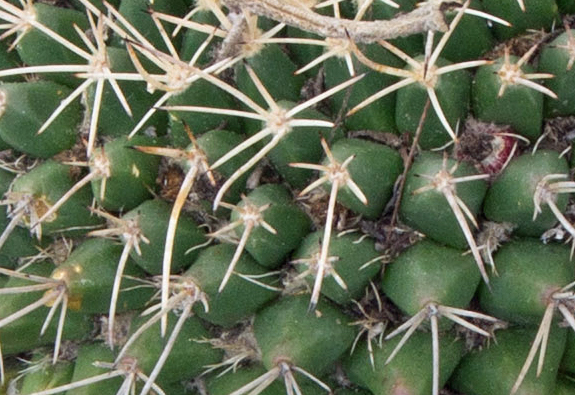 I can't find any reference to M. compressa being found near San Gilo, Hidalgo, only M. seitziana Repp 1922, and Reppenhagen says that the axils of this are either naked or with white wool, no mention of bristles. So I am now rather confused! There is no doubt that both species are highly variable, which is what has given rise to so many names, and also the fact that M. magnimamma flowers vary from cream to cream with a dirty red centre stripe to pure pink confuses the matter even more. I have seen both species in a variety of places in Mexico, and at times have got very confused. For example, I found a plant that I thought was M. compressa ssp. centralifera to the east of SLP city, and on examination of the photos it has no bristles, and the central could just be a long curved lower radial. But south of Las Tablas, a very similar plant which had bristles. Hmmmm..........
_________________
Chris43, moderator
| |
|   | | woltertenhoeve
Number of posts : 348
Registration date : 2009-10-01
 |  Subject: Re: Mammillaria ID Subject: Re: Mammillaria ID  Wed May 07, 2014 8:27 pm Wed May 07, 2014 8:27 pm | |
| My vote now goes to M. centralifera (M. compressa ssp. centralifera in Hunt's system). This clumping, red-flowering species grows over a large area, from around Rio Verde (San Luis Potosí state), northward to Las Tablas (SLP) and Tula and Bustamante (both in Tamaulipas state). Attached is a photo of M. centralifera which I found somewhat to the northwest of Tula. Wolter ten Hoeve, Assen, The Netherlands.  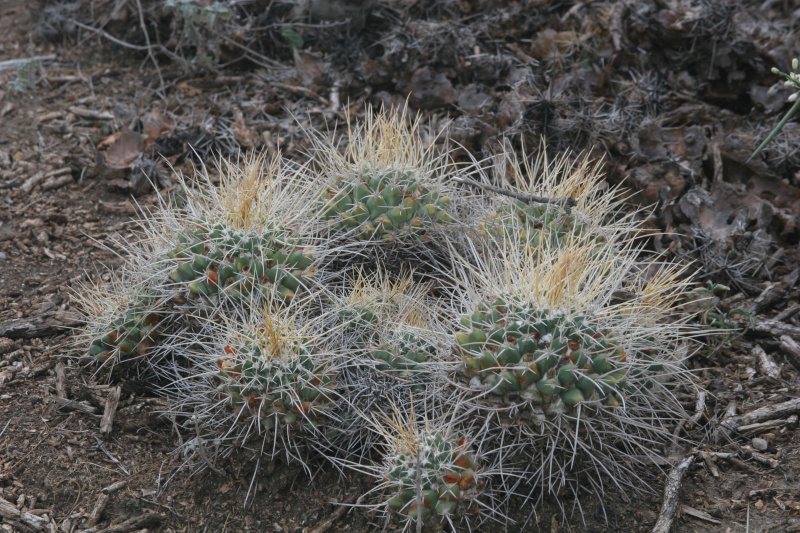 | |
|   | | Guest
Guest
 |  Subject: Re: Mammillaria ID Subject: Re: Mammillaria ID  Thu May 08, 2014 10:11 am Thu May 08, 2014 10:11 am | |
| Thanks Wolter, it had some "children" on the side growing, but i've cut them and gave it to friends.
Your informations are very useful. |
|   | | Sponsored content
 |  Subject: Re: Mammillaria ID Subject: Re: Mammillaria ID  | |
| |
|   | | | | Mammillaria ID |  |
|
Similar topics |  |
|
| | Permissions in this forum: | You cannot reply to topics in this forum
| |
| |
| |
|
